PPC Optimization: Most Common Issues and Tips From an Expert
Pay-per-click (PPC) marketing is one of the most popular forms of advertising. Google Ads, or any other PPC ads, operate on the PPC model, where users bid on keywords and pay for each click on their advertisements. Learn more about PPC optimization and how to run a PPC campaign.

Oct 29 2021●10 min read
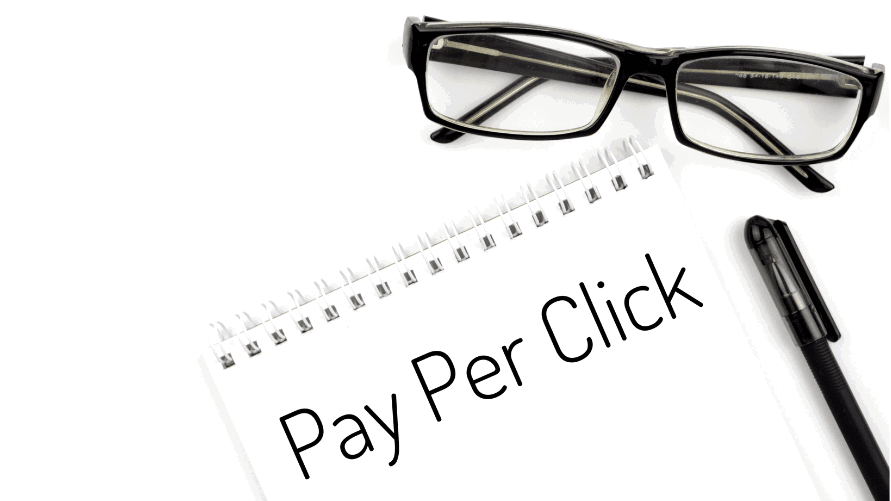
Whatagraph’s PPC specialist Tomas Kibirkštis was generous enough to share some details about his job. He provided solutions to the most common issues encountered while creating PPC campaigns and PPC optimization strategies.
Tomas also offered some quick tips to optimize your PPC and maximize PPC performance. Continue reading to learn about Whatagraph's PPC optimization and how he manages occurring obstacles.
PPC optimization tips
Focus on the right metrics
Many people complain about the high cost per click (CPC) and cost per mile (CPM), poor reach, and impressions number. Yet, when asked about their goals, you’d usually hear something irrelevant like ‘sales’. Naturally, another question pops up - why do you care about high CPC price if the primary metric, in this case, should be sales volume and spend.
When it comes to ‘the right metrics’, we can't give you guidance because depending on the industry, company, and goals, you should be tracking different ones. ‘When focused on the wrong metrics, 97% of inbound marketing campaigns fail’.
If you use Google Ads for PPC, make sure to keep an eye on industry benchmarks.
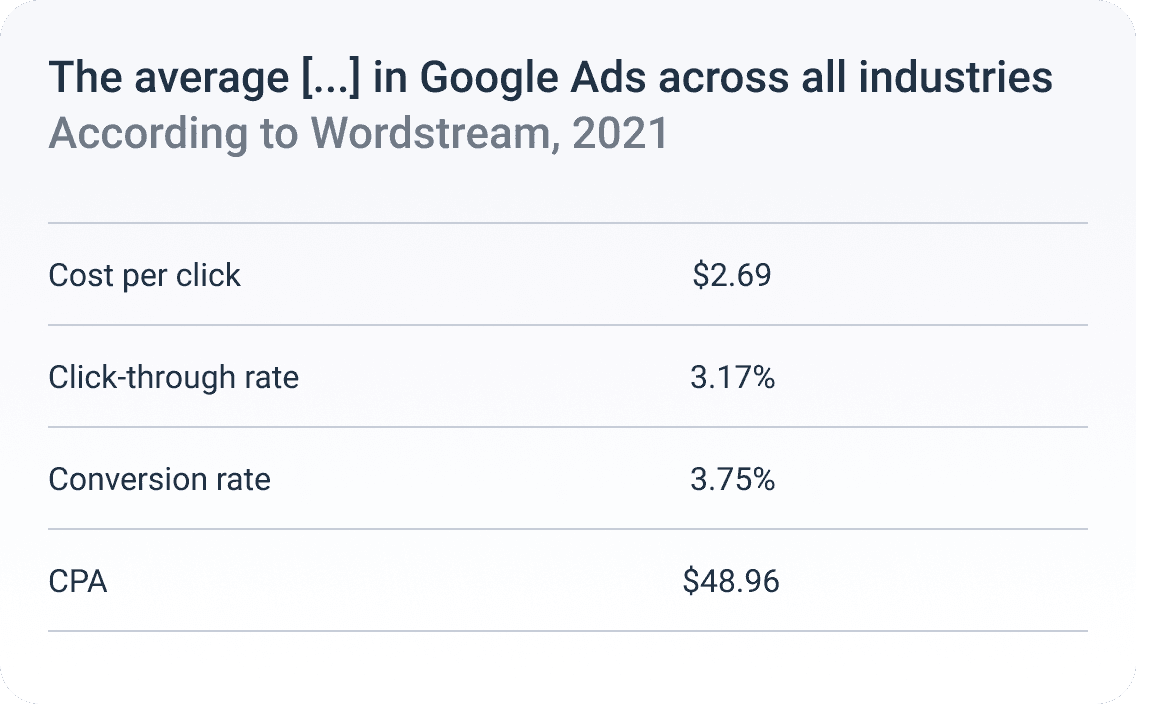
Build solid account structure
Before you run PPC campaigns or start optimizing, you need to create a well-structured account. Even though it will most likely change and evolve over time, it is a place where you control your ads.
Depending on the platform, it used to be extra beneficial to segment Google Ads or Facebook accounts. For example, PPC specialists used to create separate ad groups (the name was “Single Keyword Ad Group” ("KAG)) for each keyword separately. Now it is recommended to consolidate accounts.
To summarize it:
- Research keywords. Consider what your audience is searching for. Make a list of the specific keywords & topics you’d like to rank for and create basic categories;
- Create ad groups. Google suggests having no more than 30 keywords per ad group, and then two to three ads per ad group that are using the keywords within that ad text;
- Determine PPC budget. To be even more specific, keyword budget. Define how much the keyword is going to cost for every click (CPC);
- Campaigns. These are typically overarching groups that define product type, location, audience, and so on.
Advice: It is also common to determine negative keywords. Create a negative keyword list that you don’t want traffic any from.
Test your ads the right way
As Tomas said, people have already learned how to perform an A/B test. Which is crucial before you make any PPC campaign-related decisions. He just isn’t sure if they are doing it correctly.
Here is how Whatagraph's PPC expert tests PPC ads:
- He picks one variable to test at a time;
- Then he gives PPC ads (Amazon Ads, Google Ads or Facebook Ads) some time to run to get the best picture of the PPC campaign strategy;
- To analyze which variable performs better, Tomas is using PPC reporting template to then gather relevant data & metrics for future references.
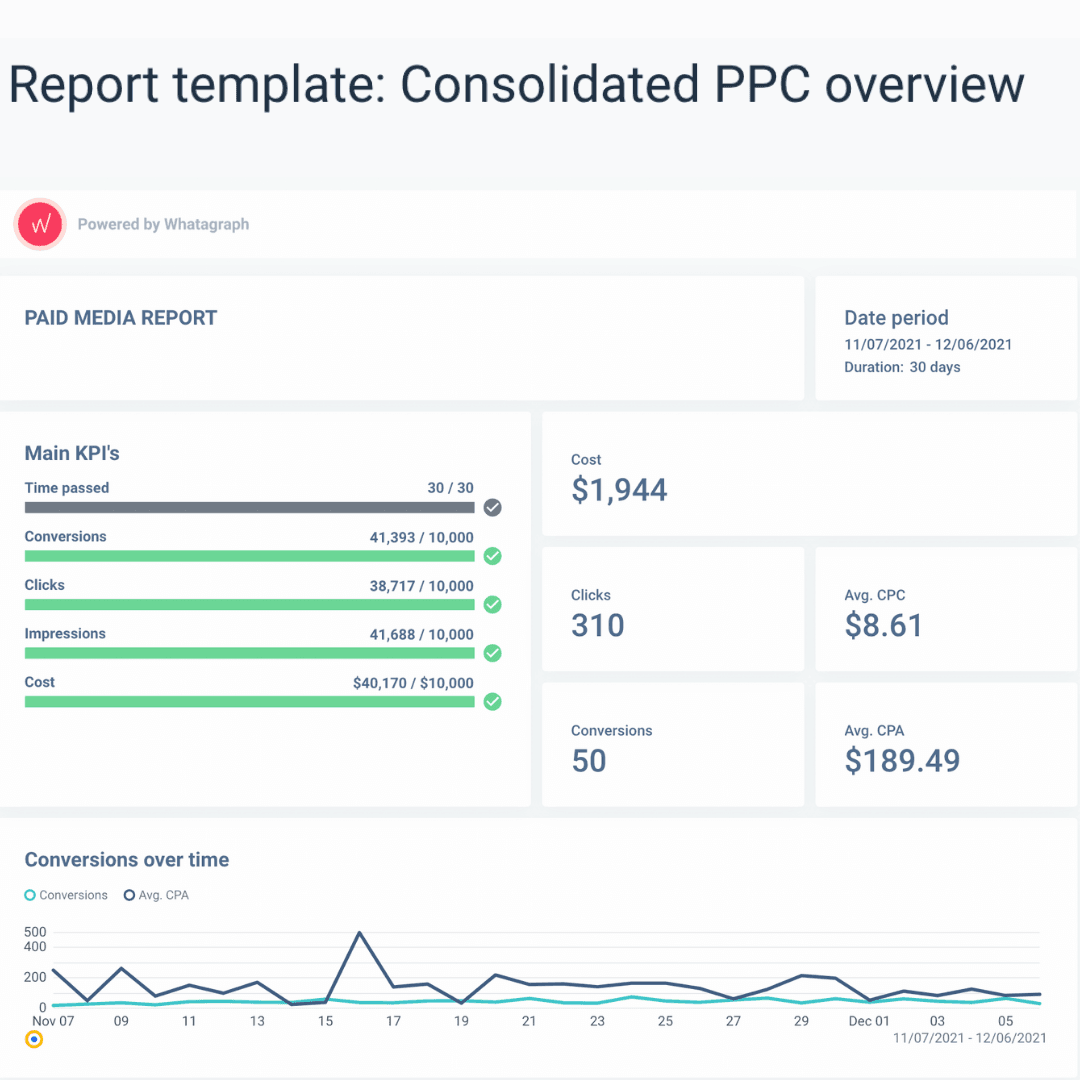
2 PPC optimization examples
Snickers is a prime example of a properly constructed account structure. They conducted research on Google's most misspelled words and bid on them. Of course, since their brand slogan is "You're not you when you're hungry," this works perfectly. What was the outcome of this campaign? 558,559 ad impressions and 5874 website clicks were generated by the Google Ads campaign.
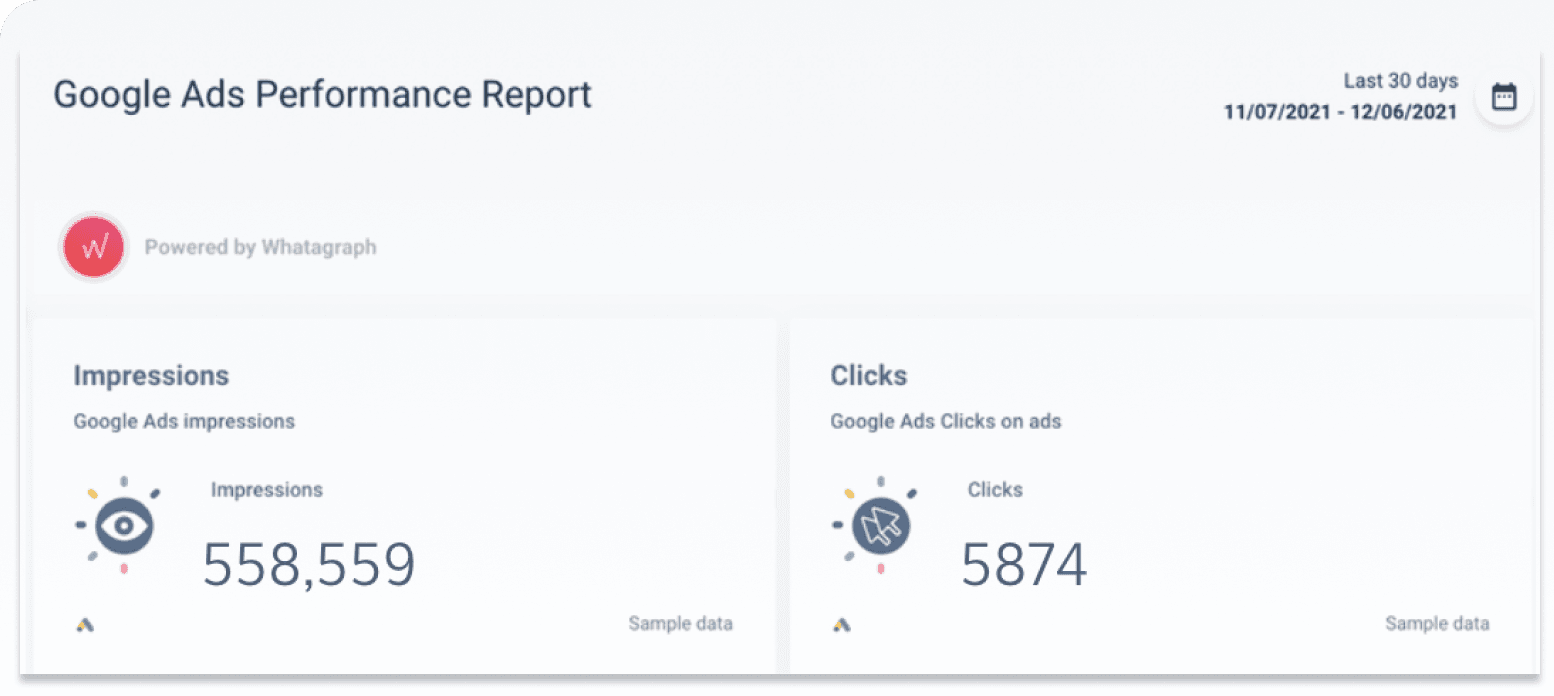
Samsung's PPC Google Ads campaign is another example of a successful PPC Google Ads campaign. When Samsung released the S6, Apple released launched the 6S. To capitalize on this event, Samsung hijacked and trolled the iPhone company by bidding on every iPhone 6s search with the phrase 'oops... did you mean S6?' The outcome was pretty amazing. They received a total of 1316% CTR!
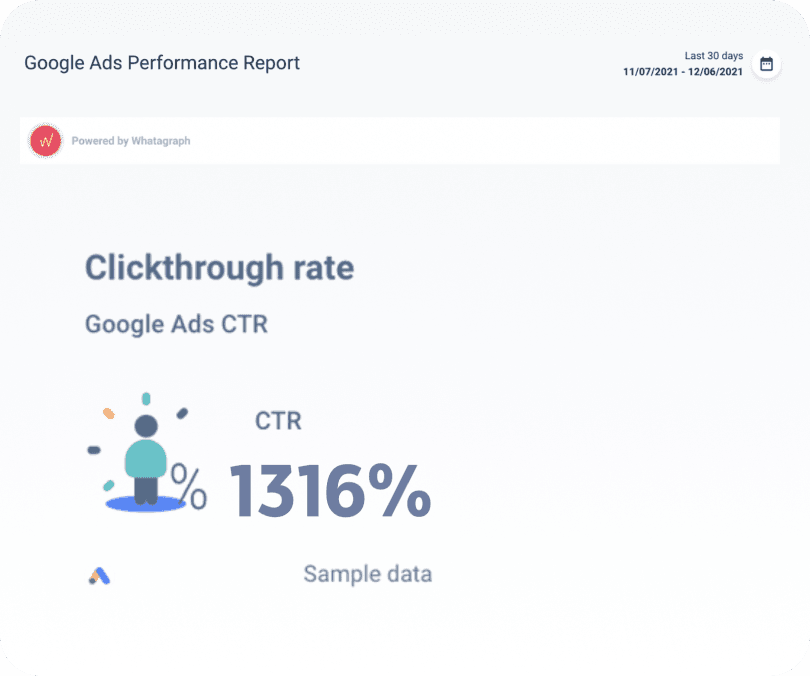
PPC issues
The algorithm is constantly changing
And you can't predict how it will change in the future. The largest platforms are developing their own algorithms that use thousands of signals to determine who should see the ad. The main disadvantage of it is that bidding algorithms and suggestions encourage higher spending. This is a significant problem paid media managers have to face. As Tomas said, it took years for him to understand the algorithm and how it worked.
'One week, specific PPC campaigns get so many conversions, low CPC, the results are great... Next week the same PPC campaign can bring the opposite, worst results' - Tomas Kibirkštis.
Advice from Tomas: Don't panic. Keep an eye on long-term trends rather than short-term jumps.
Broken landing pages
This can happen on any website. Companies rebrand, change the appearance of their blogs, redesign their websites, and apply new SEO strategies. As a result, it's natural and typical for landing pages to be misplaced or erased.
A single landing page can prevent your ad copy from appearing, while redirection can lower the quality scores, resulting in higher CPCs. Furthermore, both of these can lead to tracking issues with Google Ads and Google Analytics.
Solution: Ad scripts should be implemented. You'll need to set up the sYou'llheets and copy the scripts to do so:
Bottom line
You may still need to measure them, depending on your metrics and key performance indicators. Whether it's ad rank, conversion rates, ad clicks, we've got you covered. Without PPC reporting software, PPC optimization is impossible. For an overview of your PPC campaign's results, use PPC reporting template. Consolidate all of your pay-per-click advertising channels onto a single page.

WRITTEN BY
Dominyka VaičiūnaitėDominyka is a copywriter at Whatagraph with a background in product marketing and customer success. Her degree in Mass Communications/Media Studies helps her to use simple words to explain complex ideas. In addition to adding value to our landing pages, you can find her name behind numerous product releases, in-app notifications, and guides in our help center.